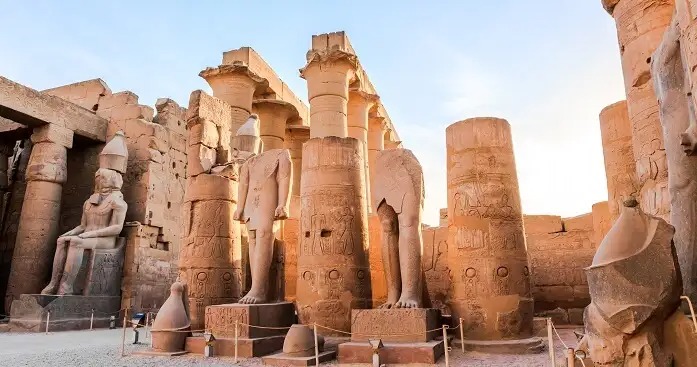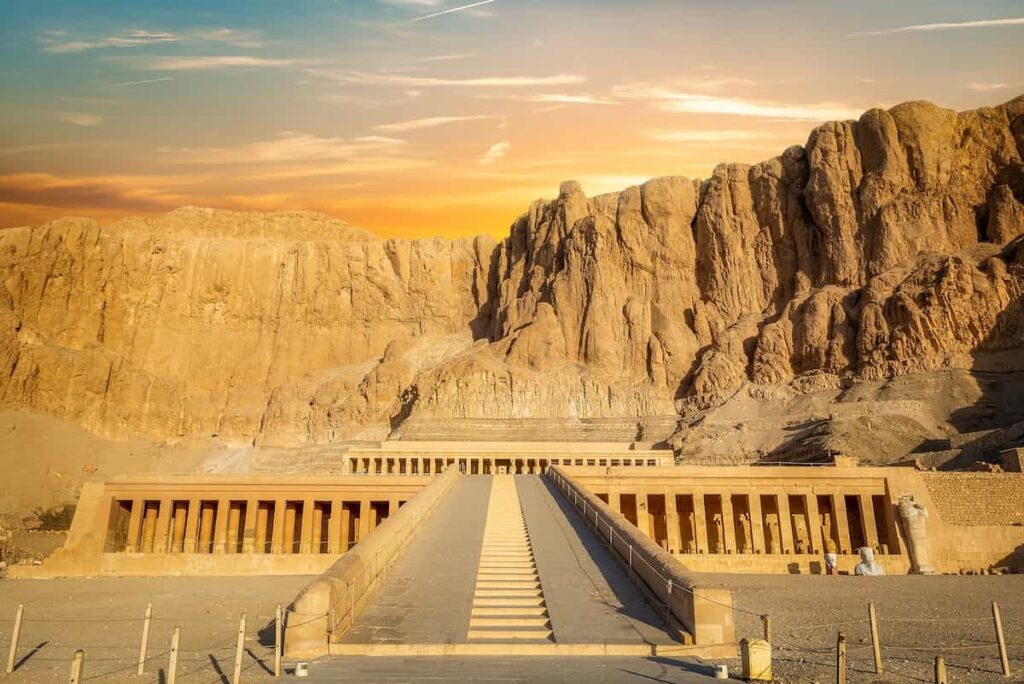If ancient Egypt had a beating heart, it would be Luxor. Sitting quietly along the east bank of the Nile, Luxor might not look like much from a distance—but it holds more history per square kilometer than anywhere else on Earth. It’s not just a city. It’s a living museum, an ancient archive under the sun, where pharaohs built temples to gods, and tombs deep in the rocks still whisper secrets of the afterlife.
Once the mighty capital of the New Kingdom, Luxor was known as Thebes—home to powerful kings, elaborate rituals, and unimaginable wealth. Today, what remains is breathtaking.

Let’s begin west of the Nile, where the ancient Egyptians buried their dead, believing the setting sun symbolized the journey to the afterlife. Here lies the Valley of the Kings, a sprawling necropolis carved into limestone hills. It’s not flashy from the outside, but inside—wow. The tombs are painted in stunning colors, still vibrant after over 3,000 years. They were built to guide the pharaohs into the afterlife, filled with spells from the Book of the Dead, sacred images, and walls that seem to glow with myth and mystery.

The most famous tomb here? That would be Tutankhamun’s—“King Tut”—whose discovery in 1922 sparked a global Egyptomania. His mummy still rests there, in a glass case, his face darkened by time but still intact. And while his golden treasures are now mostly in museums, the power of the place hasn’t faded one bit.
Nearby is the Valley of the Queens, where royal wives and children were buried, including Nefertari, Queen of Ramses II. Her tomb, often called the most beautiful in Egypt, bursts with color and elegance. Every inch of it seems alive, painted with gods and scenes of divine protection, like a prayer captured in stone.

But Luxor isn’t just about what’s buried. Cross the river and you’ll find Karnak Temple, a jaw-dropping complex that took over 2,000 years to complete. It’s a forest of massive columns, many taller than a house, and statues that loom like gods themselves. The Great Hypostyle Hall is its crown jewel—134 gigantic pillars arranged in perfect rows, their tops like papyrus blossoms, still holding up slabs of stone that weigh more than most trucks.

Not far from Karnak is the Luxor Temple, lit up beautifully at night. While it’s smaller than Karnak, it has a unique charm—especially with the Avenue of Sphinxes now linking the two. Once used for grand processions, this long road was hidden under houses and streets for centuries until excavations brought it back into the light.

Everywhere you walk in Luxor, you’re stepping over layers of history. Farmers till fields where pharaohs once marched. Kids play football near temples that once echoed with chants and offerings. Time moves on, but Luxor stays rooted—offering a direct line to a world that still shapes how we think about power, death, art, and divinity.
And while many visitors come for the monuments, what often stays with them is the quiet magic of the place. The way the sunlight hits the sandstone. The calls of boatmen offering felucca rides on the Nile. The sound of chisel marks still visible in tomb walls. Luxor doesn’t just teach you history—it lets you feel it.


My brother suggested I might like this blog. He was entirely right. This post truly made my day. You cann’t imagine simply how much time I had spent for this info! Thanks!
I’m so glad to hear that—and big thanks to your brother for pointing you this way! Happy the post made your day and gave you the info you were looking for.
You actually make it seem so easy along with your presentation however I in finding this topic to be actually something which I feel I’d by no means understand. It sort of feels too complicated and very large for me. I am looking forward for your next publish, I will try to get the hold of it!